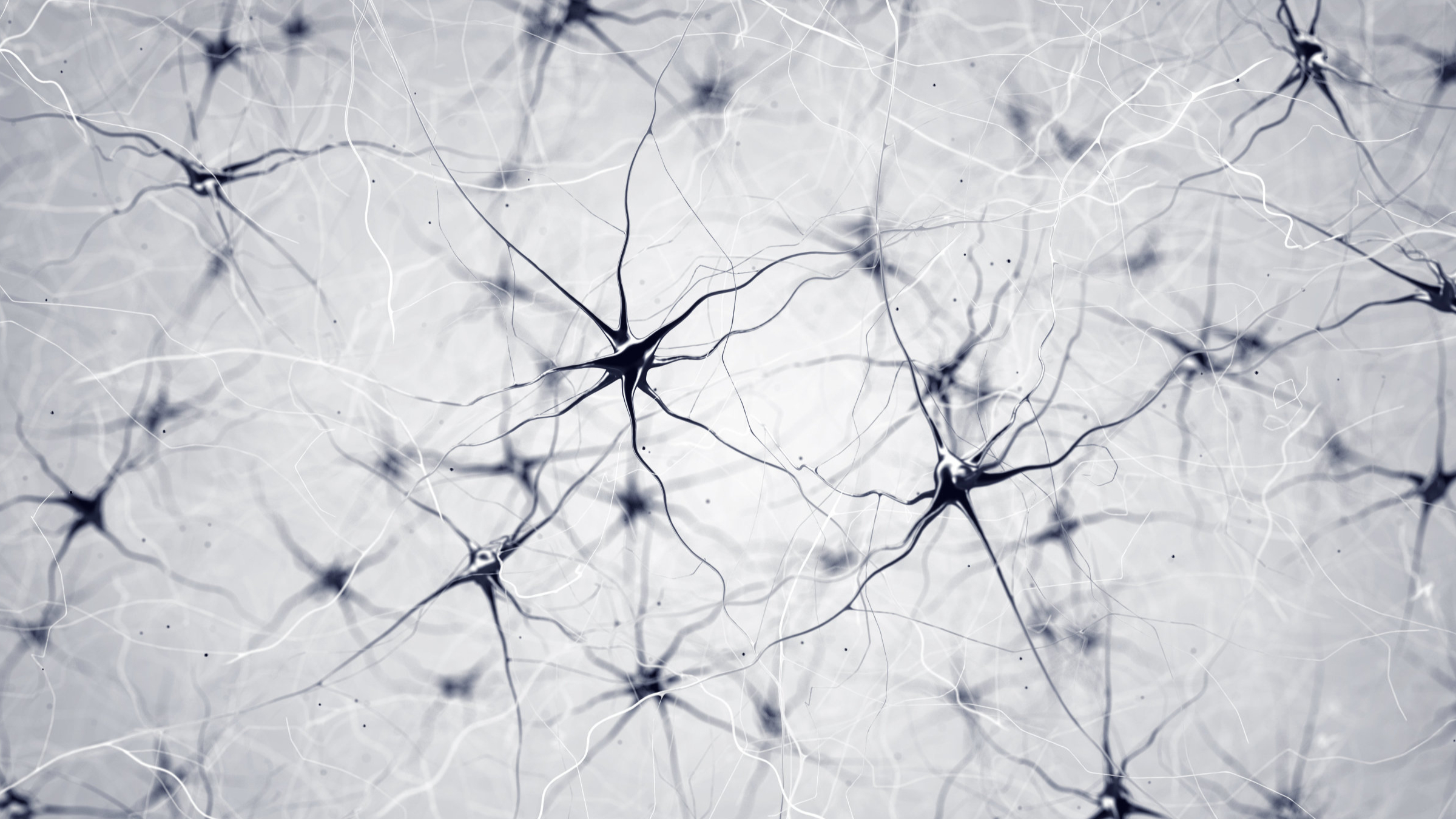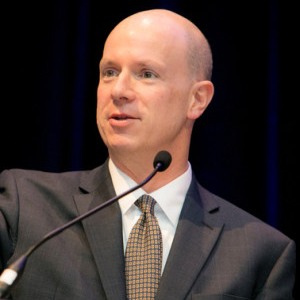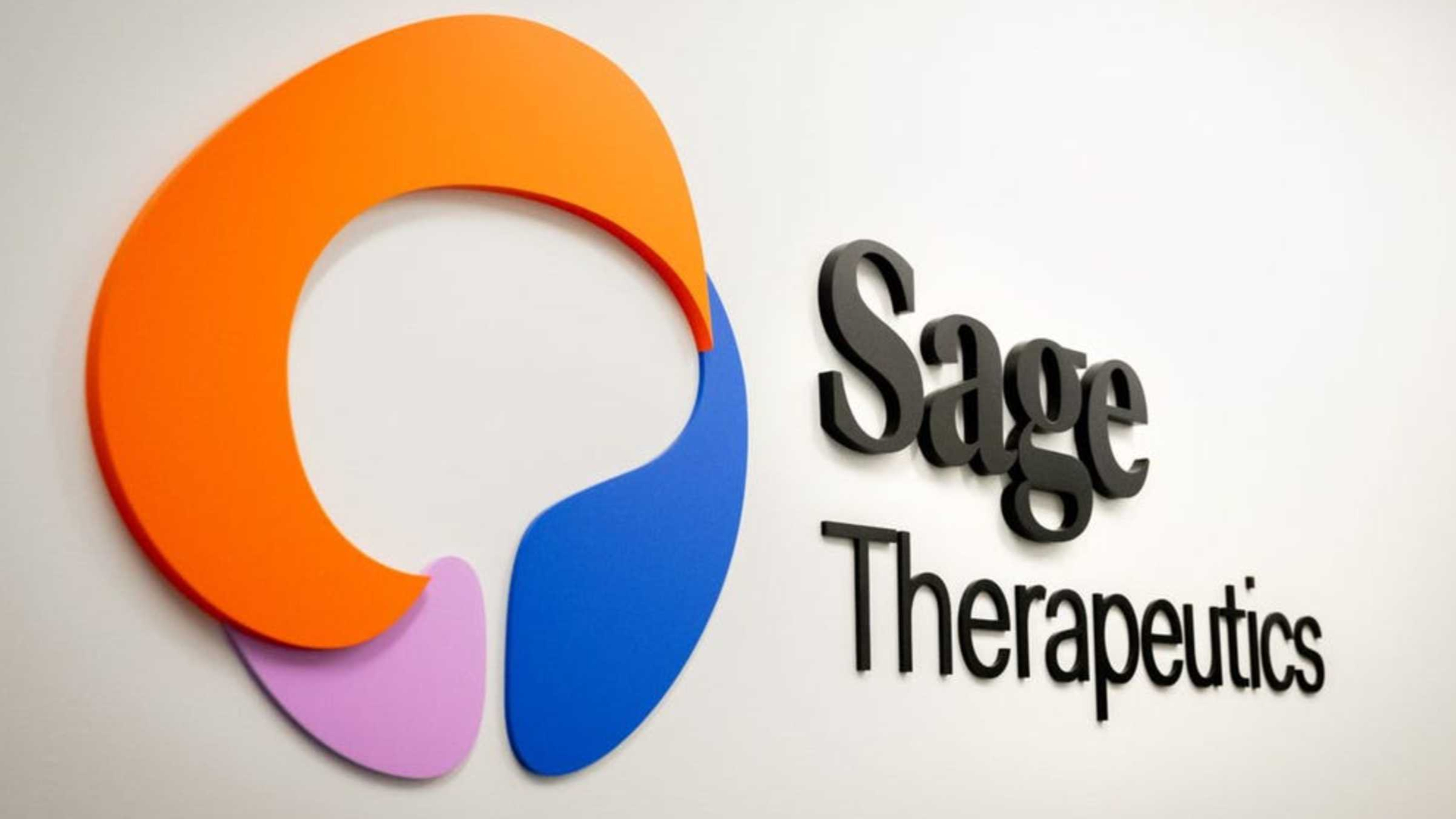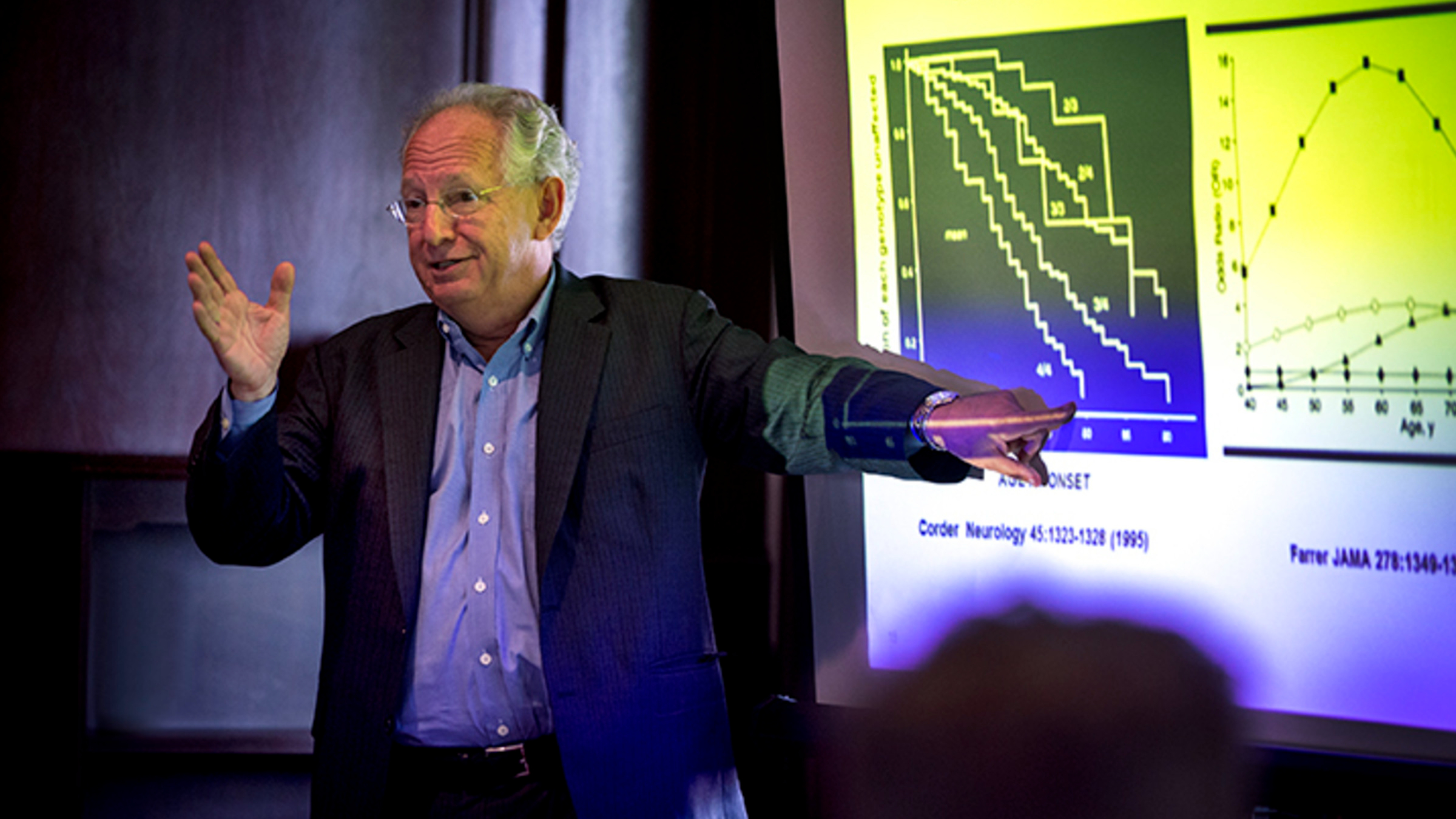
'If you could have the next Prozac, that’s intoxicating': Sage’s postpartum depression triumph and the failure that followed
In 2015, psychiatrist Samantha Meltzer-Brody saw an unbelievable transformation in a new mother who had been admitted to her psychiatry clinic. Withdrawn and having suicidal thoughts, the woman was infused with an experimental drug. Within 24 hours, she brightened and was eating, talking and smiling.
“It was like when you come home from your summer vacation, and your flowers are all dried up and wilted,” said Meltzer-Brody, a researcher and chair of psychiatry at the University of North Carolina at Chapel Hill. “Then they get a great soaking of water, and everybody perks up.”
Postpartum depression affects a shocking 1 in 8 new mothers — roughly 500,000 women in the US each year. But like much of women’s health, it’s been understudied and overlooked.
Last month, after years of development and false starts, Sage Therapeutics launched zuranolone, the pill-form follow-up to the drug that Meltzer-Brody’s patient received. The drug mimics a hormone that naturally rises during pregnancy and plummets after delivery, and it is by all measures a breakthrough that will help thousands of women.
But the scientific and medical journey the drug represents has been matched by tumult at the biotech. With success at hand in postpartum depression, Sage made a fateful decision. Based on a parallel, though less certain, theory of how the brain and the drug might work on brain circuits in men and women, it went after major depression, a far larger and more lucrative indication affecting not just half a million people but a population more than 40 times that size.

All of the news, delivered with full-text to your inbox. For professionals discovering, developing, and marketing biopharmaceutical drugs.
“There’s a big leap from postpartum women to now let’s give it to everybody,” Meltzer-Brody said. “But how would you not try it? If you could have the next Prozac, that’s intoxicating.”
Sage is still reeling from that decision today. Blindsided by the FDA’s rejection in major depression, the company was met with one of the year’s harshest biotech crashes, cutting Sage’s shares in half and valuing the company just above the cash in its accounts.
To understand how it got to this point — and what comes next — Endpoints News interviewed more than 20 current and former employees, advisors, and independent scientists and psychiatrists. Zuranolone’s story highlights the nonlinear process of drug discovery, the ever-frustrating mystery that is depression, and an acknowledgment that it’s time to stop treating the mental illness as one homogenous condition.
***
‘It really was the natural, no-lose, study to do.’
***
Precision medicine has yet to significantly impact the field of psychiatry. Over the past decades, as drug developers sliced diseases like cancer into smaller and smaller indications based on genetics, companies working on mental disorders stuck to the standard playbook of using the same drugs to treat multiple conditions and bigger populations.
“It was all about clumping, not splitting,” said Steve Kanes, Sage’s former chief medical officer. “There really wasn’t a drive to think about either physiologically or genetically dissecting out the patient population into groups that are similar to each other.”
At first, Sage seemed like the exception. The company was centered around a neurotransmitter known as GABA, which, along with its counterpart glutamate, acts as the brakes and gas pedals of the brain. Imbalances in the communications between the circuits of brain cells that rely on the two chemicals are hypothesized to play a role in most major psychiatric diseases.
In 1986, while searching for natural molecules that could fine-tune those communications, Steve Paul — the scientific director of the National Institute of Mental Health — made a surprising discovery. Allopregnanolone, a metabolite of the hormone progesterone, enhanced the inhibitory receptors that GABA normally binds to.
Steve Paul, Sage co-founder and former scientific director of the National Institute of Mental Health
Click on the image to see the full-sized version
Allopregnanolone was largely associated with the menstrual cycle and pregnancy. But animal testing found that levels of the molecule rose during stress, and a colleague discovered that it could quell severe seizures in rodents.
“It was always my belief that we could potentially make drugs out of this,” Paul said.
Paul got his chance in 2010, after an almost two-decade stint at Eli Lilly that followed his government career. Backed by $35 million from Third Rock Ventures, Paul founded Sage to test his neurosteroid theory. The team immediately faced two big challenges. Could the molecules be turned into convenient pills? And of the dizzying list of conditions neurosteroids had been implicated in since Paul’s time at NIMH, which would Sage pick? There would be false starts on both fronts.
Neurosteroids are greasy, insoluble, and notoriously hard to formulate in ways that can be given to patients. Paul’s former NIMH colleague Michael Rogawski, who studied epilepsy and brain injury, had moved to academia and was trying to start a clinical trial using an infusion of allopregnanolone. The study was put on hold because the molecule leached into its plastic IV bag. But Sage’s chemists were able to solve the problem (though it would lead to bitter disputes about who deserved credit for developing the therapy).
The first patient to get the drug was a young man with deadly, repetitive seizures. Doctors put him into a monthslong coma to keep him alive, and were hoping that a five-day infusion of allopregnanolone would keep his seizures at bay as they reawakened him.
It worked. The man’s seizures stopped, and he returned home and recovered. The stunning outcome led Sage to prioritize the severe form of the epilepsy — called super refractory status epilepticus — as its lead program and central story during its IPO in 2014.
The lengthy infusion made sense for patients who were on death’s door, but Sage was already working on a follow-up that would be taken as a pill for milder disease. While its scientists put the finishing touches on that drug, Sage’s research leaders were tasked with identifying other conditions where an allopregnanolone infusion could give a quick read on the drug’s potential efficacy.
Postpartum depression emerged as a top pick.
***
‘We’ve got to have more innovation in depression …
this can’t be seen as a cautionary tale.’
***
The rationale was simple. During pregnancy, the ovaries and placenta pump out progesterone, causing levels of its metabolite allopregnanolone to rise. The molecules plummet after the baby and placenta are delivered. Some studies suggested allopregnanolone levels were lower in women with depression right before or after giving birth.
“That was interpreted as the removal of an antidepressant substance,” Rogawski said. “So the concept was, could you mitigate this by replacing allopregnanolone?”
Kanes, the former chief medical officer who joined Sage in 2013, wondered why the idea hadn’t been tested sooner. “It seems so elegant and straightforward,” he said.
One scapegoat is the Diagnostic and Statistical Manual of Mental Disorders, the guidebook for mental health workers, which still lumps postpartum and major depression together. Another reason was the industry’s hesitancy to test drugs in pregnant or breastfeeding women. “So it’s been avoided like the plague,” Meltzer-Brody said.
When Sage executives first started kicking the idea around, they doubted that a multiday infusion would appeal to new mothers. But then they met Meltzer-Brody, who was running an inpatient psych clinic at UNC specifically for pregnant and postpartum women. “That’s when the light bulb went on,” said Kiran Reddy, a former Third Rock Ventures employee who helped launch Sage.
Meltzer-Brody and her department chair David Rubinow, who had previously worked with Paul as a clinical director at NIMH, flew up to Cambridge to pitch Sage on using allopregnanolone in postpartum women. The group agreed to test 60-hour infusions of the drug, a somewhat arbitrary timeframe deemed long enough to wean a patient on and off over the course of a weekend. The first patient’s 24-hour turnaround in Meltzer-Brody’s clinic would become legendary in the field.
“Either this was one heck of a placebo response, or there was something there,” she said of the 2015 test.
When three more mothers with postpartum depression got the drug, it was like a switch flipped in each of them. The rapid and sustained response stunned Sage, and the company quickly moved to test the infusion, which it renamed brexanolone, against a placebo later that year.
The following summer, Sage announced a resounding success. Seven of the 10 patients who got the drug improved significantly and stayed well for 30 days, compared to just 2 of 11 placebo patients.
Three years later, the FDA would approve the infusion for postpartum depression, and Sage brought it to market as Zulresso. It was a commercial flop. Insurers balked at its $34,000 price tag and the lengthy hospital stay, which most doctors and patients weren’t prepared for either. Earlier this year, CEO Barry Greene said that only “hundreds” of patients had got it, “not the thousands of moms we hoped to help.”
But Sage’s chemists had forged a backup plan — a similar but distinct molecule that could be taken as a pill that would get the company asking a fateful question.
***
‘It made all the sense in the world to explore how far we could take this.’
***
Sage had always been interested in developing new drugs for depression writ large, even if the biological rationale for an allopregnanolone therapy wasn’t as clear-cut. After the promising trial in postpartum women in 2016, the company began charting a course for tests in major depression.
“You could not be sitting on a drug that hit a specific subtype of major depressive disorder without thinking how and why might it work in a broader population,” Kanes said. “It made all the sense in the world to explore how far we could take this.”
And while there was no way that millions of people would sit for an infusion, a pill version of the approach could have far more appeal. And the company had been working on just that.
Since 2012, Sage’s former director of chemistry Gabriel Martinez and chief scientific officer Al Robichaud had been drafting structures of hundreds of compounds that they hoped would target GABA receptors just like allopregnanolone.
Some of the most well-known psychiatric drugs, including Xanax and Valium, enhance GABA receptors. The drugs, called benzodiazepines or benzos, are potent sedatives that can reduce anxiety, insomnia, and seizures. But they have the potential for abuse and addiction, and they aren’t effective at treating depression.
Sage’s aim was to target the receptors in a different way. While benzos mostly target receptors in the synapse, allopregnanolone also leaks out of that cleft to enhance so-called extrasynaptic receptors on the neuron, which exert a dampening effect that helps control how numb or jumpy a brain cell is.
Working with contractors in China and Europe, Sage’s chemists searched their newly designed compounds for ones that mimicked allopregnanolone’s effects on extrasynaptic receptors, Martinez said. It would become the main explanation, albeit a circular one, for why Sage’s drug was different from benzos and why it relieved depression when the older GABA-enhancing drugs didn’t.
Sage also dialed out the natural molecule’s ability to target hormone receptors, which they thought would make it safer for long-term use and give the company a clean test of whether the drug’s therapeutic effects were really working through GABA, according to Sage’s current chief scientific officer Mike Quirk.
At the behest of former Sage CEO Jeff Jonas, who declined interview requests, the company’s scientists nominated their favorite molecule, which became zuranolone. Initially billed as a maintenance therapy for status epilepticus, zuranolone would become the company’s north star after its infusion therapy for epilepsy failed in 2017 and Jonas pivoted, going all in on zuranolone’s antidepressant potential.
***
‘A lot of clinicians, including myself, will use zuranolone if
it does get approved, hoping that the results will be different.’
***
While awaiting results of two larger allopregnanolone infusion studies in postpartum depression, Sage plowed forward testing zuranolone in nearly 90 men and women with major depression in April 2017. The drug blew the company away with a whopping seven-point difference on a common scale of depression between those who took the pill for two weeks and those who got a placebo.
“It worked like gangbusters,” Kane said.
The treatment’s short course, far briefer than traditional antidepressants, baffled and excited experts. “It really breaks the mold in terms of the way we’ve all been taught to think about therapy for depression,” said James Murrough, a psychiatrist at the Icahn School of Medicine at Mount Sinai.
But Sage’s first major depression study would be its best. In a second study of 320 patients from December 2019, zuranolone proved no better than placebo. Even so, after a meeting with the FDA early the next year, Sage assuaged investors that it only needed one more successful trial in major depression to submit the drug for approval.
The company slashed its workforce in half that spring to cut costs and struck a deal worth up to $3.1 billion — roughly half upfront — with Biogen to jointly develop and commercialize zuranolone and an earlier-stage drug for movement disorders. In a call with investors in November 2020, Biogen’s CEO Michel Vounatsos said the drugs “potentially represent multibillion-dollar value-creation opportunities,” and another executive called it a potential “paradigm shift” in depression treatment.
The following summer, in Sage’s biggest major depression study of 530 patients, the drug reduced depression by roughly 1.7 points compared with placebo after two weeks. The difference was statistically significant, but it failed to reach the two- or three-point benchmark that many doctors consider meaningful.
Some psychiatrists argued that the magnitude was similar to what’s seen in studies of standard antidepressants known as selective serotonin reuptake inhibitors, or SSRIs, and they were eager to have a new tool for those who don’t respond to existing drugs.
“A lot of clinicians, including myself, will use zuranolone if it does get approved, hoping that the results will be different,” Craig Chepke, a psychiatrist who runs a private practice and has consulted for Sage, said before the FDA decision. “It’s not just a minor variation on a theme. This works on a completely different neurotransmitter system.”
***
‘It’s a miracle that any of our drugs work in psychiatry because, really, we know so very little’
***
Scientists have long struggled to connect the dots between what antidepressants actually do in the brain and their mood-lifting effects. The most common depression drugs — SSRIs like Prozac — increase levels of serotonin in synapses. But what happens over the four to six weeks before relief sets in, and why they only work for some people, is a mystery.
“It’s a miracle that any of our drugs work in psychiatry because, really, we know so very little,” Chepke said. “It’s a lot of conjecture and educated guesses.”
Studies in postpartum rodents suggest that a mismatch between fluctuating levels of both GABA receptors and allopregnanolone, rather than the hormone itself, could be to blame for depression. Since researchers have long suspected that GABA signaling may be out-of-whack in major depression, Kanes thinks it’s conceivable that something similar happens in major depression. In fact, Paul points toward small studies showing that SSRIs increase levels of allopregnanolone.
But Sage’s strongest rationale for testing its pill in the broader condition was that its infusion worked in postpartum women.
“It really was the natural, no-lose study to do,” Quirk said. “If you tested it in major depression and it didn’t work, then you could say there is something unique about postpartum depression.”
Because zuranolone works more quickly than SSRIs, at least in postpartum depression, Quirk and other scientists are hopeful that it will be easier to track the step-by-step changes it triggers in the brain. In fact, Tufts University neuroscientist Paul Davies, working with Sage, found that zuranolone not only enhances existing GABA receptors, but increases the number of these receptors in neurons. Davies is currently trying to understand if this change explains why the drug’s antidepressant effects linger after patients finish their two-week course. “It’s a hypothesis,” he said.
But even if it’s true, the idea doesn’t get to the crux of the issue. What is it about enhancing or boosting those receptors that alleviate depression?
Sage describes depression as a disease of neural circuits — where connections and communications between brain regions relying on GABA receptors get out of whack. Zuranolone essentially adjusts the thermostat back into its setpoint, Quirk said. But exactly how that works, nobody knows.
“We still have a lot of learning to do,” Quirk said. “In that sense, we’re not really different than the SSRIs.”
***
‘The major depression field has just been plagued with failed clinical trials’
***
While the FDA likes drugmakers to know what their medicines do, it doesn’t require detailed explanations of why therapies work. All that really matters is data showing that a medicine is safe and effective.
Despite the murky results in major depression, the results of two studies of zuranolone in postpartum depression were clearer. But even there, the trial showcased the two truisms of antidepressants: the treatment doesn’t work for everyone, and many people feel better just by taking a placebo.
 Billy Dunn
Billy DunnLeading up to the FDA’s decision in August, there were signs that something was amiss as Biogen and Sage went mum and stopped hyping the drug’s blockbuster potential. Former employees told Endpoints that the company had worked “hand in glove” with the agency under its former neuroscience leader Billy Dunn and “were in disbelief” by the rejection in major depression.
Dunn departed the agency in early 2023 after coming under fire for his role in the approval of Aduhelm, the Alzheimer’s drug that many neurologists felt hadn’t been proven safe or effective. A former leader at Sage, who was not authorized to speak publicly, said the FDA wasn’t convinced about the drug’s durability. And they felt like zuranolone’s rejection was a result of the agency trying to be more conservative after a string of controversial approvals.
Endpoints was unable to reach Dunn directly, but a request for comment was passed on through Prothena, a biotech company whose board he joined in May. Dunn didn’t respond. An FDA spokesperson said the agency couldn’t comment.
With its bigger commercialization plans foiled, Sage announced layoffs, cutting 40% of its workers. The company declined to discuss the FDA decision and hasn’t said whether it will attempt new tests of zuranolone in major depression. The standstill is frustrating to former Sage executives and advisors, many of whom still believe zuranolone works for major depression.
“The major depression field has just been plagued with failed clinical trials,” said Jamie Maguire, a neuroscientist at Tufts and member of Sage’s scientific advisory board. “The issue has always been and continues to be, that we can’t identify and stratify patients that would be amenable to this type of treatment. That’s going to be a problem for every new drug for major depression, and until we address that, we will have an uphill battle.”
***
‘There’s not going to be just one kind of depression, just like there’s not one kind of breast cancer’
***
While it’s tempting to wonder if Sage’s mess is the result of moving beyond a seemingly clean hypothesis around neurosteroid deficiency to a much murkier but more commercially tempting one centered on GABA, Quirk insists that this isn’t true.
“We wanted to be focused on a neural circuit story,” he said. “Neurosteroids are just a class of molecules that provides a different way of modulating GABA receptors.”
The neurosteroid and GABA modulation hypotheses for how allopregnanolone and zuranolone work are not mutually exclusive, and many researchers hope that zuranolone will spur more work in understanding GABA’s role in depression.
“I think that there’s not going to be just one kind of depression, just like there’s not one kind of breast cancer,” said Meltzer-Brody, the UNC researcher and clinician. “And that means you have to treat it differently.”
Even so, the guidebook for mental health workers still lumps the two together.
“It would be tragic if this is the end of the road, and the abruptness of how this happened scares off investment in treating depression,” Meltzer-Brody said. “The mental health crisis is real. Suicide rates have never been higher.
“We’ve got to have more innovation in depression,” she added. “This can’t be seen as a cautionary tale.”

